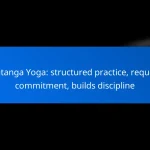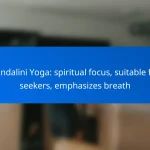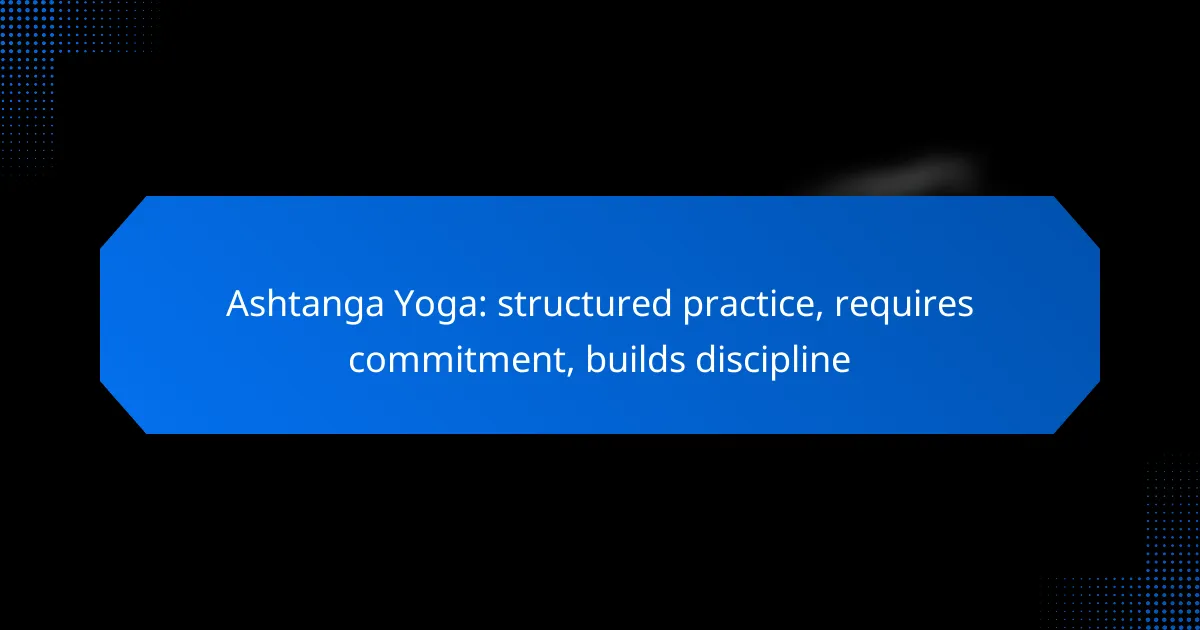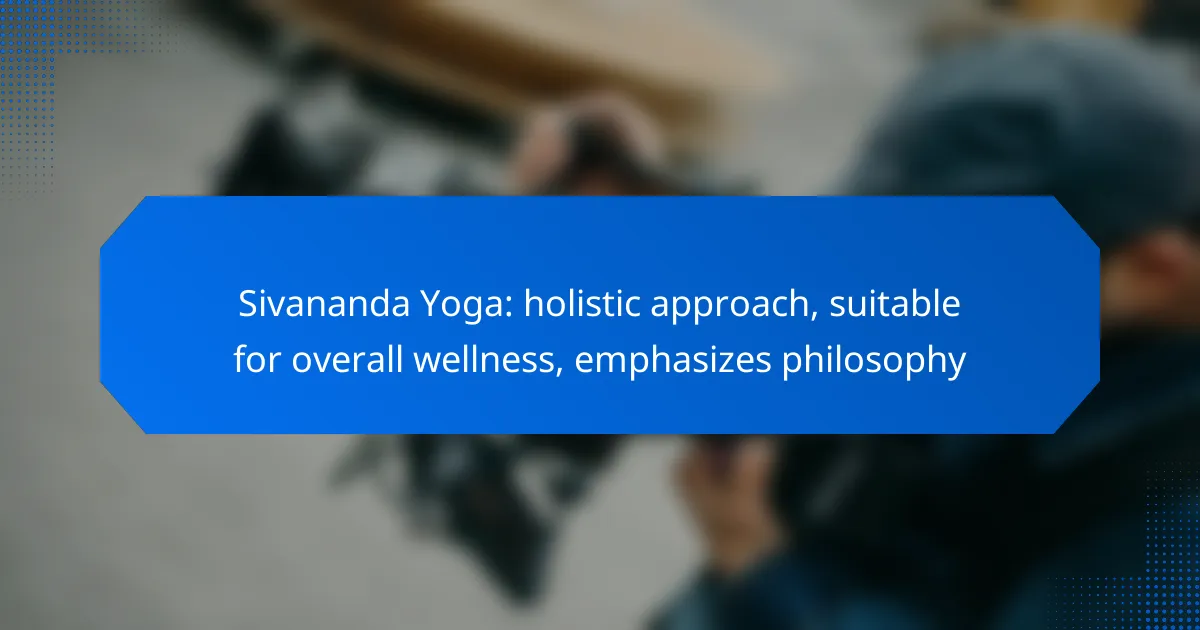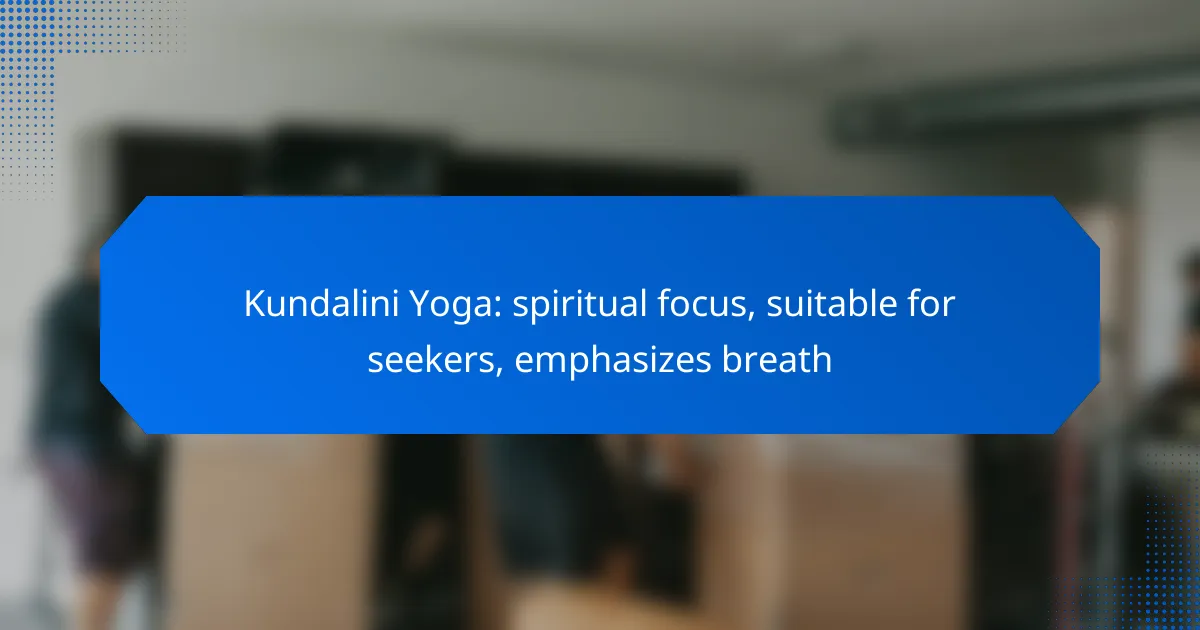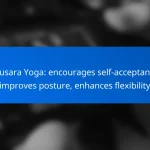
Donot Miss
Latest Posts
Highlight
Popular News
Yoga encompasses a variety of styles, each offering distinct approaches and benefits tailored to individual needs. From Hatha to Kundalini, understanding these styles can help practitioners align their fitness goals and personal preferences with the most suitable practice. Whether you seek physical strength, mental clarity, or spiritual growth, exploring different yoga styles can enhance your overall well-being.
Anusara Yoga: encourages self-acceptance, improves posture, enhances flexibility
Anusara Yoga is a transformative practice that encourages self-acceptance while enhancing both posture and flexibility. By emphasizing alignment and body awareness, it helps practitioners improve their spinal health and overall body structure. Through dynamic movements and mindful breathing, Anusara Yoga fosters a compassionate relationship with oneself, promoting personal growth and well-being. How does Anusara Yoga […]
Yin Yoga: slow-paced, suitable for relaxation, focuses on deep stretches
Yin Yoga is a slow-paced practice that emphasizes deep, passive stretches, making it ideal for relaxation and stress relief. By holding poses for extended periods, practitioners can target connective tissues, enhance flexibility, and cultivate a meditative state that calms the mind and promotes overall well-being. How does Yin Yoga promote relaxation in London? Yin Yoga […]
Laughter Yoga: boosts mood, enhances social connection, reduces stress
Laughter Yoga is a unique practice that combines laughter exercises with yoga breathing techniques, effectively boosting mood and promoting relaxation. By fostering a sense of community and belonging, it enhances social connections among participants, helping to break down barriers and build meaningful relationships. Additionally, this joyful practice serves as a powerful tool for reducing stress […]
Ashtanga Yoga: structured practice, requires commitment, builds discipline
Ashtanga Yoga is a disciplined practice that emphasizes commitment through a structured series of postures and breathing techniques. This methodical approach not only cultivates physical strength and flexibility but also fosters mental focus and self-discipline, making regular practice essential for mastery and personal growth. How does Ashtanga Yoga build discipline? Ashtanga Yoga builds discipline through […]
Aerial Yoga: myth of danger, fact of safety, enhances fun
Aerial yoga, often misunderstood, is a safe and exhilarating practice when conducted under the supervision of qualified instructors in reputable studios. By debunking common myths and emphasizing proper training and safety protocols, practitioners can enjoy the unique blend of traditional yoga and the thrill of suspension, enhancing both fun and flexibility. Is Aerial Yoga Safe […]
Kundalini Yoga: spiritual focus, suitable for seekers, emphasizes breath
Kundalini Yoga is a transformative practice that emphasizes breath control, movement, and meditation to awaken spiritual energy and enhance self-awareness. Ideal for seekers on a journey of spiritual growth, it integrates techniques such as pranayama and kriyas to foster a deeper connection with one’s inner self. Through these practices, practitioners can experience significant shifts in […]
Power Yoga: myth of only for athletes, fact of accessibility, builds endurance
Power Yoga is often mistakenly viewed as a practice exclusive to athletes, but it is actually designed to be accessible for individuals of all fitness levels. This dynamic form of yoga not only builds endurance through strength training and movement but also welcomes beginners, making it a practical choice for anyone looking to enhance their […]
Yin Yoga: myth of inactivity, fact of deep work, promotes healing
Yin Yoga is often misunderstood as a passive practice, but it is actually a profound form of deep work that promotes healing through targeted stretching and long-held postures. By focusing on connective tissues, Yin Yoga encourages relaxation while actively releasing tension in both the body and mind. This unique approach not only enhances flexibility but […]
Bikram Yoga: detoxifies body, enhances mental clarity, promotes weight loss
Bikram Yoga is a dynamic practice that detoxifies the body by promoting sweating and enhancing circulation, effectively flushing out toxins. In addition to physical benefits, it enhances mental clarity through focused postures and controlled breathing, helping practitioners achieve a calm and concentrated state of mind. Furthermore, the intensity of the practice aids in weight loss […]
Iyengar Yoga: alignment-focused, suitable for injury recovery, detailed instruction
Iyengar Yoga is a unique practice that focuses on precise alignment and detailed instruction, making it an excellent choice for those recovering from injuries. By emphasizing safe and effective pose execution, this method helps practitioners regain strength and flexibility while minimizing the risk of further harm. Its accessible nature ensures that individuals at all levels […]
What are the most popular styles of yoga in the UK?
The most popular styles of yoga in the UK include Hatha, Vinyasa, Bikram, Ashtanga, and Kundalini. Each style offers unique approaches to practice, catering to different preferences and fitness levels.
Hatha Yoga
Hatha Yoga is a foundational practice that emphasizes physical postures, breathing techniques, and meditation. It is often slower-paced, making it accessible for beginners and those looking to improve flexibility and strength.
Classes typically focus on basic poses and alignment, allowing practitioners to build a strong foundation. It is advisable to choose a class that matches your skill level to avoid frustration and injury.
Vinyasa Yoga
Vinyasa Yoga is characterized by fluid movements that connect breath with each pose, creating a dynamic flow. This style can vary in intensity, making it suitable for both beginners and experienced yogis seeking a more vigorous workout.
Look for classes that emphasize breath synchronization and transitions between poses. A common pitfall is rushing through the flow; focus on maintaining control and alignment throughout your practice.
Bikram Yoga
Bikram Yoga consists of a series of 26 postures performed in a heated room, typically set at around 40°C (104°F). This style aims to promote detoxification and flexibility through the heat, which can help deepen stretches.
It's important to stay hydrated before and after classes, as the heat can lead to dehydration. Beginners should be cautious and listen to their bodies, taking breaks as needed to avoid overheating.
Ashtanga Yoga
Ashtanga Yoga follows a set sequence of poses performed in a specific order, emphasizing strength, flexibility, and stamina. This rigorous style is often practiced in a heated environment and is suitable for those looking for a challenging workout.
Practitioners should be prepared for a physically demanding experience. It’s advisable to have some prior yoga experience before attempting Ashtanga, as the sequences can be complex and require a good understanding of alignment.
Kundalini Yoga
Kundalini Yoga focuses on awakening the kundalini energy at the base of the spine through a combination of postures, breathwork, and chanting. This style is less about physical fitness and more about spiritual growth and self-awareness.
Classes often include meditation and mantra chanting, making it a holistic practice. Beginners should approach Kundalini with an open mind, as the experience can be quite different from more physically oriented styles.
How do I choose the right style of yoga for my needs?
Choosing the right style of yoga involves understanding your fitness goals, physical limitations, and personal preferences. Each yoga style offers different benefits, so aligning these factors will help you select the most suitable practice.
Consider fitness goals
Your fitness goals play a crucial role in selecting a yoga style. If you're looking for strength and flexibility, styles like Ashtanga or Power Yoga may be ideal. For relaxation and stress relief, consider Hatha or Yin Yoga.
Think about what you want to achieve. For instance, if weight loss is a priority, Vinyasa or Hot Yoga can provide a more vigorous workout. Conversely, if mindfulness and meditation are your focus, Restorative Yoga might be a better fit.
Evaluate physical limitations
Assessing your physical limitations is essential when choosing a yoga style. If you have injuries or chronic pain, gentler styles like Yin or Hatha can help you practice safely without straining your body.
Consult with a healthcare professional if you're unsure about your limitations. They can guide you on which styles may be safe and beneficial, ensuring you avoid practices that could exacerbate any issues.
Assess personal preferences
Your personal preferences significantly influence your yoga experience. Consider whether you enjoy a fast-paced environment or prefer a slower, more meditative approach. This can help you narrow down your options.
Additionally, think about the type of community you want to be part of. Some styles, like Bikram, are often practiced in a studio setting, while others may be more flexible, allowing for at-home practice. Choose a style that resonates with your lifestyle and comfort level.
What are the benefits of different yoga styles?
Different yoga styles offer a range of benefits that cater to various physical, mental, and spiritual needs. Understanding these advantages can help practitioners choose the style that best suits their goals and lifestyle.
Physical health benefits
Yoga enhances physical health by improving flexibility, strength, and balance. Styles like Hatha and Vinyasa focus on dynamic movements that build muscle tone and endurance, while restorative practices promote relaxation and recovery.
Regular practice can lead to better posture, reduced risk of injury, and relief from chronic pain conditions. Many practitioners report improvements in cardiovascular health and respiratory function as well.
Mental health benefits
Engaging in yoga can significantly improve mental well-being by reducing stress and anxiety levels. Techniques such as breath control and meditation, commonly found in styles like Kundalini and Yin, help cultivate mindfulness and emotional resilience.
Practitioners often experience enhanced focus, better sleep quality, and a greater sense of overall happiness. These mental health benefits can be particularly valuable in today's fast-paced environment.
Spiritual growth
Many yoga styles encourage spiritual exploration and personal growth. Practices such as Bhakti and Jnana yoga emphasize devotion and knowledge, fostering a deeper connection with oneself and the universe.
Through consistent practice, individuals may find clarity in their purpose and values, leading to a more fulfilling life. Engaging with the spiritual aspects of yoga can enhance one's sense of community and belonging as well.
What should I expect in a typical yoga class?
In a typical yoga class, you can expect a combination of physical postures, breathing exercises, and meditation techniques. Classes usually last between 60 to 90 minutes and cater to various skill levels, providing a holistic approach to wellness.
Class structure overview
A typical yoga class often begins with a brief introduction and centering exercise, allowing participants to focus on their breath and intentions. This is followed by a series of poses that may vary in intensity and style, concluding with a relaxation period known as Savasana.
Classes may be structured around specific themes or goals, such as flexibility, strength, or stress relief. It's common for instructors to provide modifications for different skill levels, ensuring that everyone can participate comfortably.
Common poses and practices
Common poses in yoga include Downward Dog, Warrior I, and Child's Pose, each serving different purposes such as building strength, improving flexibility, or promoting relaxation. Many classes incorporate breathwork, or pranayama, to enhance the mind-body connection.
Practices may also include meditation or mindfulness techniques, helping participants cultivate awareness and reduce stress. The combination of poses and breathwork creates a balanced experience that can be tailored to individual needs.
Instructor's role
The instructor plays a crucial role in guiding the class, providing clear instructions, and demonstrating poses. They often offer adjustments and modifications to ensure safety and effectiveness for each participant.
Instructors also create a supportive environment, encouraging students to listen to their bodies and progress at their own pace. Their expertise helps foster a sense of community and connection among participants, enhancing the overall experience.
How can I find yoga classes near me in the UK?
To find yoga classes near you in the UK, start by searching online platforms that list local studios and classes. Websites like Yoga Alliance UK or ClassPass can help you discover options based on your location and preferences.
Online Resources
Utilize online resources such as Google Maps, which can show nearby yoga studios along with user reviews and ratings. Social media platforms like Facebook often have local groups where instructors post their classes, making it easier to find options that suit your schedule.
Additionally, yoga-specific websites and apps can provide comprehensive listings of classes, including details on styles offered, instructor qualifications, and pricing. Look for platforms that allow you to filter by class type, level, and even time of day.
Local Community Centers
Check your local community centers or gyms, as they frequently offer yoga classes at affordable rates. These venues often have a variety of styles available, catering to different skill levels and preferences.
Community centers may also host workshops or special events, providing opportunities to try different yoga styles without a long-term commitment. This can be a great way to explore what resonates with you before enrolling in a regular class.
Word of Mouth
Ask friends, family, or colleagues for recommendations on yoga classes they have attended. Personal referrals can lead you to quality instructors and welcoming environments that may not be as visible online.
Joining local fitness or wellness groups can also expand your network, allowing you to connect with others who share your interest in yoga. This can lead to discovering hidden gems in your area.


